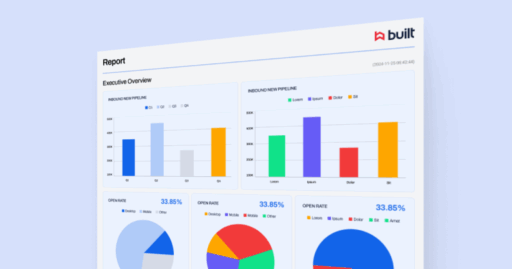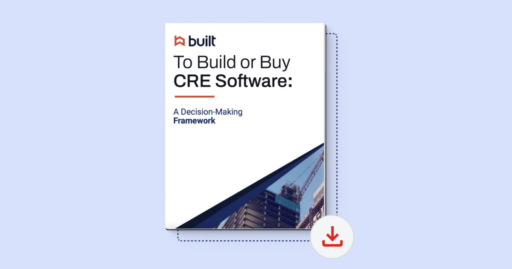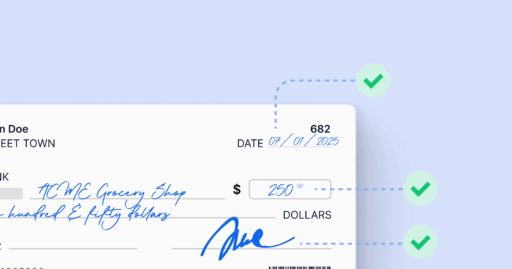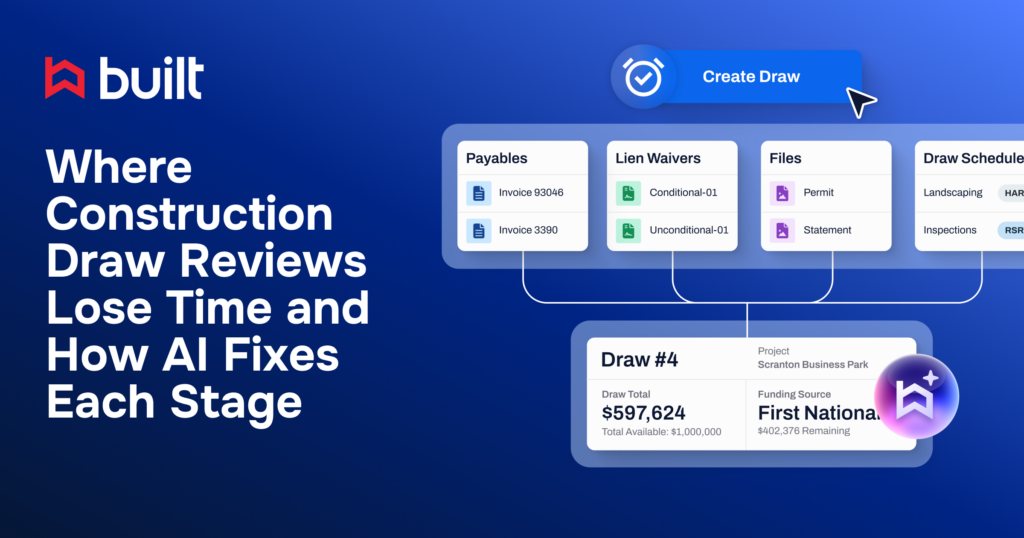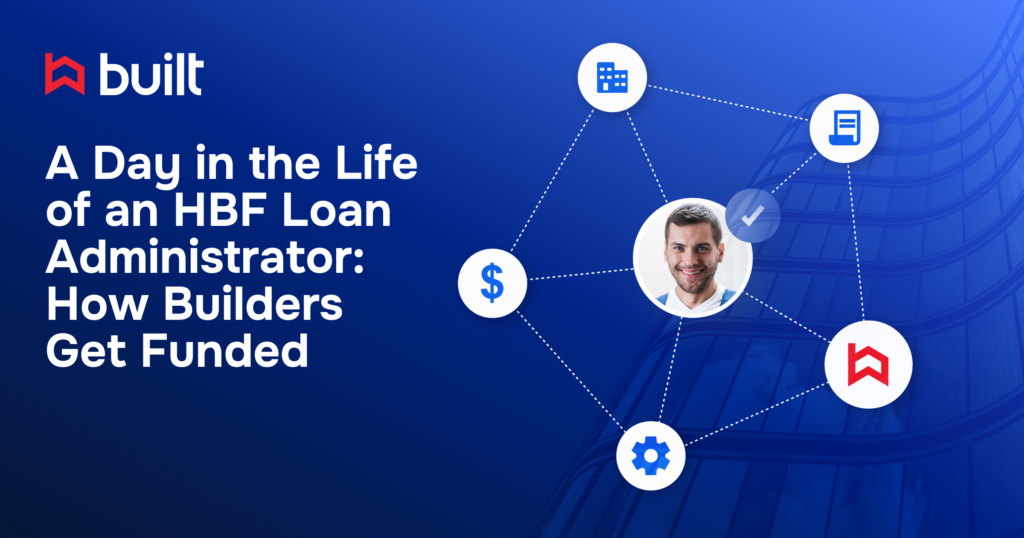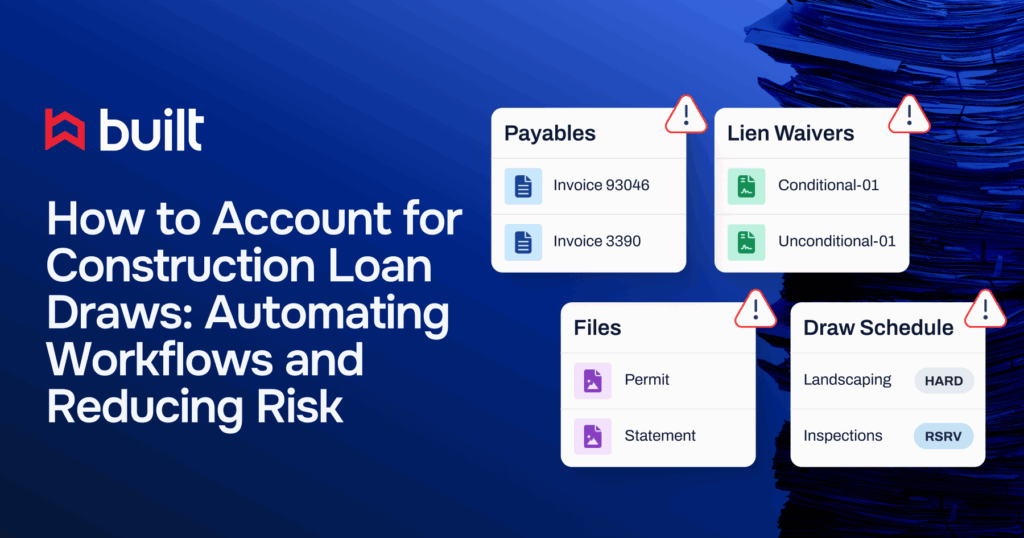
7 Common Payment Issues in Construction & How to Combat Them

General contractors have a lot on their plates: collaborating with clients, hiring subcontractors, and managing tight project timelines, to name a few. But payment issues in construction tend to take center stage, even for the most proactive GCs.
While each construction project is unique, the payment challenges GCs could face are not. GCs should keep the following challenges (and potential solutions) top of mind as they run their day-to-day operations.
Timely document collection
Most construction projects have specific windows in which subcontractors, suppliers, and the GC can submit payment applications, invoices, and lien waivers. While getting paid should be motivation enough to submit documentation on time, that’s not always the case. When a general contracting firm is managing 20 or 30 projects at a time—and each has 20 or 30 subcontractors or suppliers attached to it—receiving those documents before the deadline can be a challenge.
There are three potential methods for handling this issue:
- Let the subcontractor miss their payment window. This could tighten the subcontractor’s cash flow and risk the health of their business—something most GCs would prefer to avoid.
- Clerical staff from the GC’s office can email each of the subcontractors and suppliers to remind them of the payment window. This option is time-consuming and isn’t foolproof as it requires painstaking attention to detail and prompt responses from the subcontractors.
- Set up automatic invoice reminders that notify subcontractors and suppliers when their payment applications are due. This is likely the most efficient and cost-effective plan to avoid any time-related payment issues.
Billing ahead
When a subcontractor sends a payment application worth more than the work they’ve completed, it puts the GC in a risky position. While the contracted amount for the job hasn’t changed, billing ahead essentially front-loads the subcontractor’s profits.
Construction profit margins are often between 5% and 10% for subcontractors. If that subcontractor applies for payment worth (and receives payment for) 20% more than they should for the amount of work completed, they’ve potentially made their profit. This leaves very little incentive for them to finish their portion of the project and increases their chances of walking away from the job. If there are remaining tasks such as a punch list, they’re almost certain not to show as they’ve already made their money.
One of the most effective ways to combat this issue is to improve communication between the office and field personnel. Digital automated workflows are typically the best bet. Field personnel will have to verify that the work completed matches the amount requested by the subcontractor before office staff approves the payment. When all of this is done automatically, it saves both the field and office staff time.
Lien waivers
While lien waivers do technically fall under document collection, there’s a lot more to the story than simply grabbing a lien waiver from a subcontractor. This document exists to limit risk for one party or the other: either the threat of non-payment for the subcontractor or the threat of a lien for the GC or project owner.
In the realm of lien waivers, whoever strikes first has the advantage. If the GC collects the lien waiver before payment, they’re in the driver’s seat and can withhold payment as long as they like. If the subcontractor collects payment before signing the waiver, they could potentially file a lien on the property anyway. There are even times when accounting staff and subcontractors exchange lien waivers and checks in person and at the exact same time to ensure security.
Electronic lien waiver collection can curb the mistrust that lien waivers breed. These systems can automatically release payment upon receipt of a signed lien waiver, relieving stress for everyone involved. The subcontractor or supplier gets paid while the GC and owner know they’re free to operate without worrying about a lien.
Compliance documents
In order to reduce risk, a GC has to ensure that all of its subcontractors meet various compliance requirements. This includes licensing, insurance, bonds, and other documents that will determine whether or not they’re eligible to work on their site. And, when a subcontractor’s compliance expires, it can be the catalyst to a serious payment issue.
In a perfect world, subcontractors will stay on top of their compliance documents and renew them as needed. However, when their documents expire, the GC (if they’re aware) can withhold payment until the subcontractor becomes compliant again. In the meantime, the subcontractor’s subs or suppliers are likely going unpaid, giving them the right to file a lien against the property—a risky position for the GC and the owner.
Some states also require insurance policy audits. Payments issued to unlicensed or uninsured subcontractors can increase the GC’s liability premiums. It’s also illegal in some cases, garnering fines or even jail time.
Instead of allowing these policies, licenses, or items to run out—or tracking dates through spreadsheets—consider a digital solution that helps to track compliance. These programs track compliance and alert the GC and subcontractor when they near expiry. The alerts can help the GC track their subcontractors, request updated documents, or take action to remove non-compliant subcontractors from the job.
7 Tips for Tracking Contractor Compliance Documents
Streamline your compliance tracking process and improve the productivity of your team.
Money-moving logistics
The act of moving money from the owner to the GC and then out to the individual subcontractors is generally a slow process. In most cases, someone in accounts payable will assemble a file for the payment. They’ll include a copy of the invoice and all of the supporting documentation for that invoice period before sending it to the project manager and other higher-up stakeholders.
Then, they wait.
It typically takes a lot of time for the approvals to come back to the accounting staff. The file has to move through each approval stage one at a time, significantly increasing the time it takes to pay subcontractors and suppliers.
Moving this process to a comprehensive payment platform can garner significant gains in efficiency. While payments still have to go through the proper workflows, it’s much easier to manage multiple electronic approvals all in one place. Plus, a platform can track important documents and pay applications along the way, saving office staff valuable time and energy.
Joint checks
Owners and GCs want to avoid liens and project delays. When owners pay their subcontractors and suppliers, those parties can then pay their own subcontractors and suppliers. However, there’s always a risk that payment won’t continue down the line, and there needs to be a way to prove the original payment. Non-payment would allow the subcontractor or suppliers to file a lien against the property, potentially bringing financing, transactions, and the job to a halt.
To solve this, many owners or GCs issue joint checks to the associated parties, helping to increase visibility into the original payment. These checks have two names or entities listed on them, such as the GC and subcontractor or subcontractor and supplier. Both parties must sign off on the check before one of the parties listed on the check can cash it. In most cases, a joint check will name the subcontractor and the subcontractor’s supplier as the payee. The goal is to ensure both parties are aware of the payment so the debtor has to follow through on their further payments.
The problem is that joint checks, like any paper check, are time-consuming. Someone needs to calculate the amount, log the amount, print the check, and then mail it—and that’s easier said than done. If accounting records aren’t 100% accurate along the way, the check will have to be rewritten. The two parties must then coordinate how they’ll each sign off on the check, likely mailing it from one party to the other. Over the course of a pay period, this manual process can account for a lot of time.
GCs can avoid this by moving toward digital banking. This would greatly increase the bank’s visibility into the payments GCs make downstream, and better ensure that all parties down the line are being paid too. This method can boost efficiency while offering a safer way to send payments.
Master pay applications
Project owners don’t always want to write 30 checks each month to subcontractors or suppliers. Sometimes, they want to know how much to pay the GC so they can write them one check and let the GC send the payments. The issue lies in the logistics of calculating the amount and submitting a master payment application to the owner.
Collecting the payment applications and supporting documents from subcontractors and suppliers in a timely manner is challenging. Processing and evaluating those applications, approving or denying them, making changes, and then rolling them into one master pay application to send to the project owner—all within the payment window—is even more of a hurdle. This can account for a lot of time spent by a project manager, and it’s a recipe for inefficiency.
Digital solutions may be the answer. These solutions can not only collect the payment applications, supporting documents, and lien waivers, but also automatically generate master invoices. They can also send these applications through the proper workflows, take into account approvals and denials, and create a master invoice that the GC can then forward to the owner. The result is faster and more accurate handling of payment applications on both ends.
Solving payment challenges with digital solutions
Most of the common payment issues in construction that GCs experience today have digital or software-based solutions. By integrating project management and payment technology into their day-to-day operations, GCs can realize better efficiency, accuracy, and accountability—all keys to avoiding payment challenges and building a successful contracting business.
